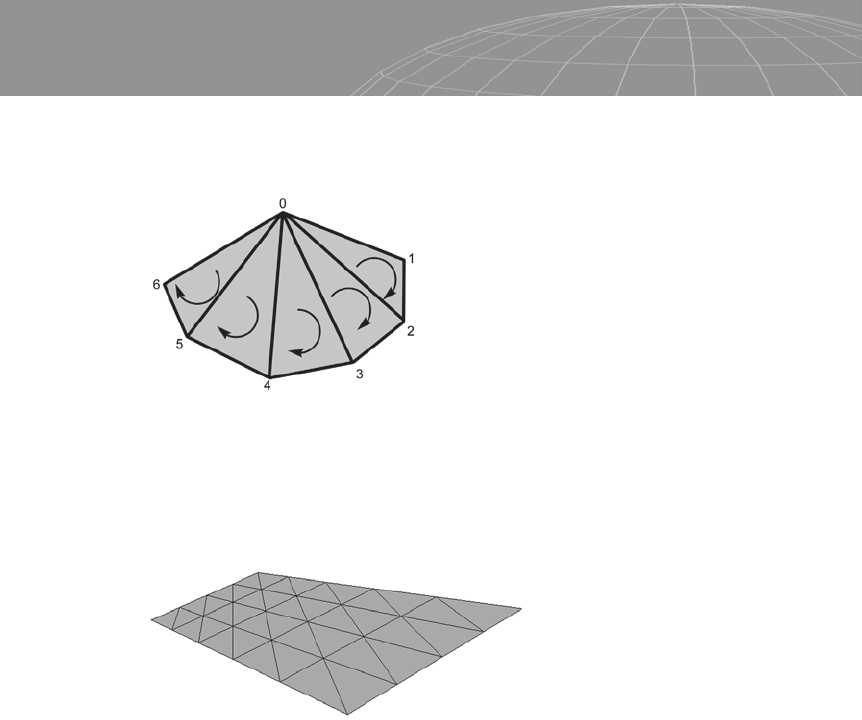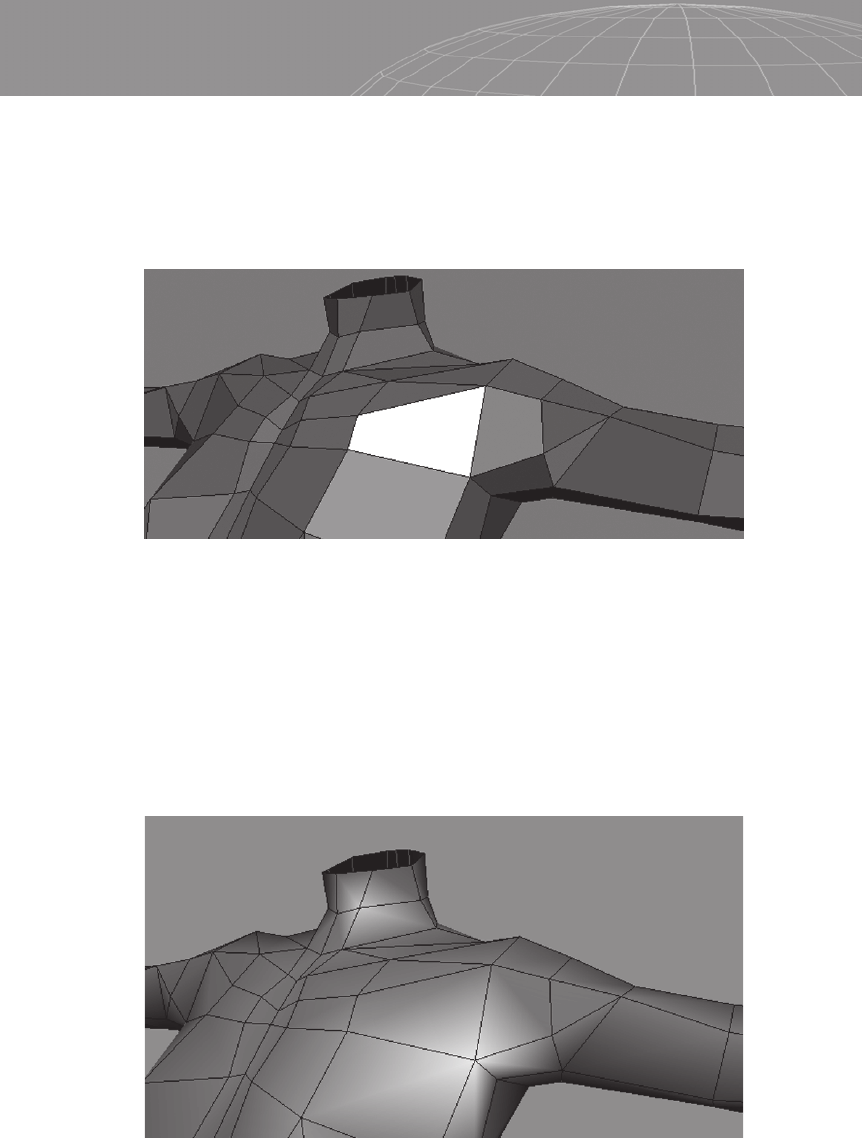
A triangle-strip fan starts with the correct winding and all the sub-
sequent triangles must point the same direction.
When modeling regular geometry it’s best to align the strips side by
side as shown in Figure 13-5. Be sure to avoid the edges that can’t
be part of a longer strip (called “singleton strips”).
The Triangles Determine the Shading
Gouraud shading, which is the default in OpenGL real-time display
mode and is available in most 3D game engines, is based on the ver-
tices of the triangles as mentioned at the beginning of this chapter.
When we analyze the wireframe of the sphere and the Gouraud
shading shown in Figure 13-6, we can see how the structure of the
wireframe influences the final look of mesh shading.
326
Chapter 13 – Modeling for Games
Figure 13-4: Triangle-strip fan.
Figure 13-5: Continuous edges through a plane are ideal for regular
geometry.

When we flip some of the edges of the triangles, we can see the
result produced by the new render in the image at the left in Figure
13-7. The edge configuration has changed the final look of the
shading.
Pushing this theory further we can create complex topologies that
are different for dealing with quad polygons and tri polygons. Game
models are typically modeled in quad, where all the loops become
clearer, and then refined in tri, if necessary. It is not recommended
that you use a plug-in to do the triangulation since you’ll have
almost no control over the shading aspect determined by the trian-
gulation. Be sure to keep an original file in quad so that you have a
clean mesh ready if you need to go back and tweak a little more.
Keep in mind that once you have triangulated your mesh it will be
hard to find your edge loops and line flows.
327
Chapter 13 – Modeling for Games
Figure 13-6
Figure 13-7

When manipulating the triangles of the mesh, the orientation
must be made according to the correct topology as much as possi-
ble. See the examples below.
When we see the mesh in faceted mode with quad polygons, it
seems to be okay.
However, when we turn on the smooth Gouraud shading we can see
that the shading determined by the triangle strips isn’t correct for
the line flow of the female body. In the deltoid area, a triangle-strip
shade seems to be ripping off the deltoid and the sternocleidomas-
toid muscle. Remember that low-poly models cannot add too much
mesh detail, so if we can tweak the triangle strips in a way that
gives the impression of correct neck flow it will be well worth the
effort.
328
Chapter 13 – Modeling for Games
Figure 13-8
Figure 13-9

The arrows in Figure 13-10 point out the flow of the light on the
mesh surface. According to the correct anatomy and the flow of the
musculature, these lines should be flipped to remove the visual
impression that something is “broken” or incorrect.
The actual musculature of the neck is opposite what is shown
above.
Now we’ve reversed some triangle edges to give the neck a more
natural aspect since it now follows the correct flow of the neck
musculature.
329
Chapter 13 – Modeling for Games
Figure 13-10
Figure 13-11
..................Content has been hidden....................
You can't read the all page of ebook, please click here login for view all page.
